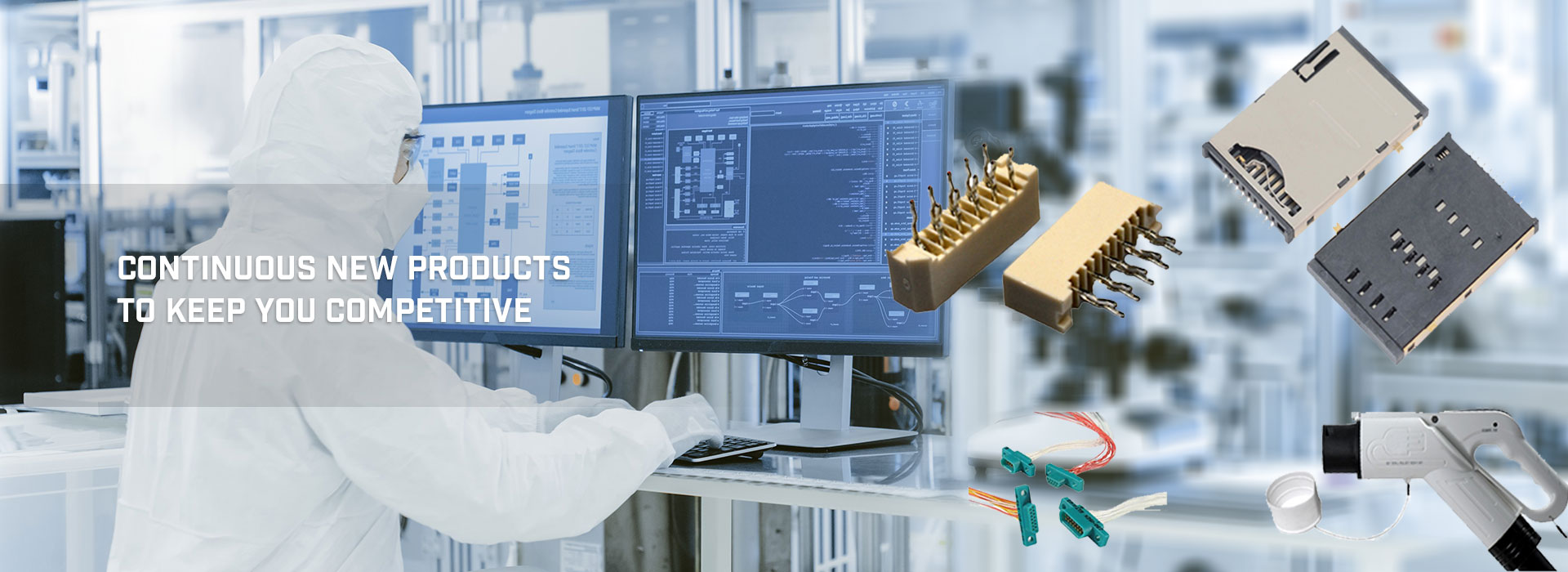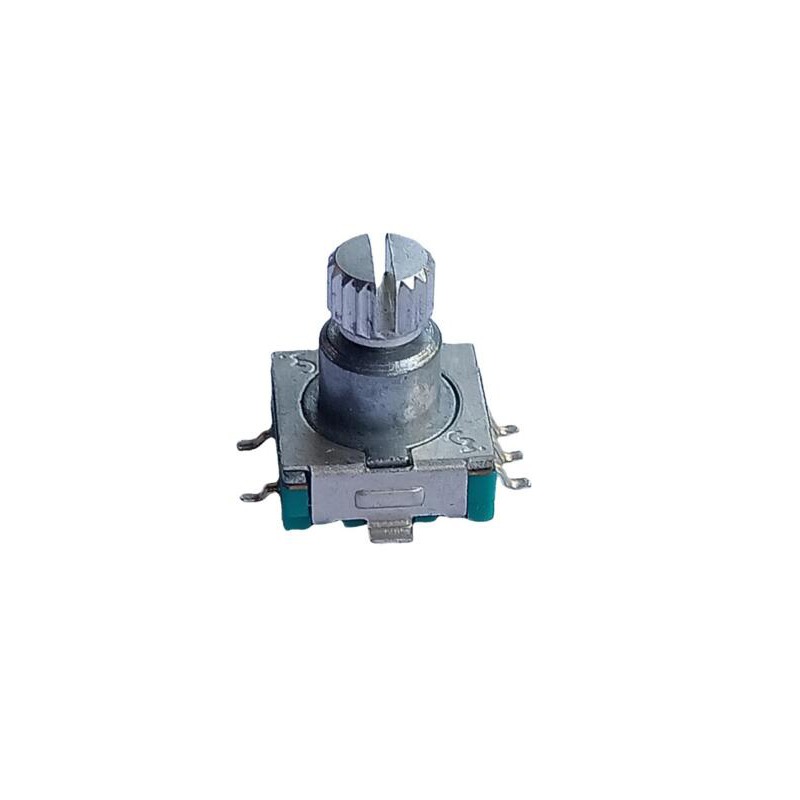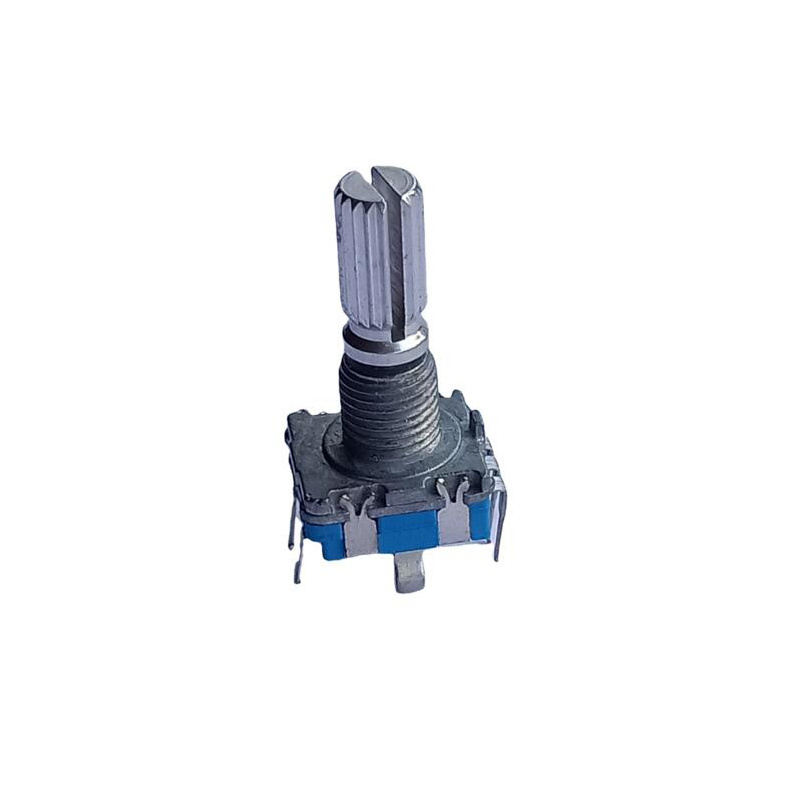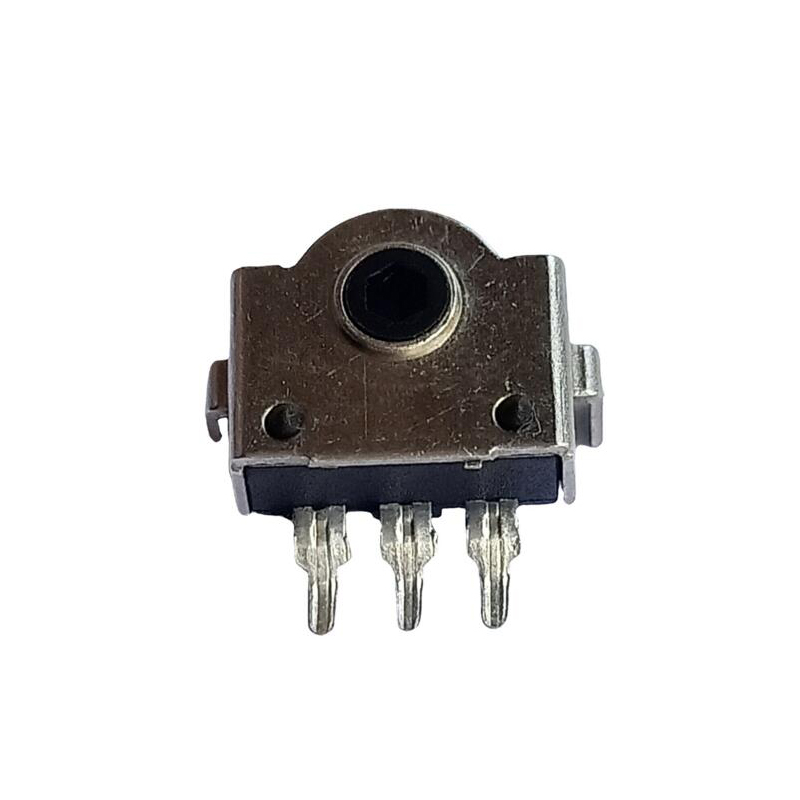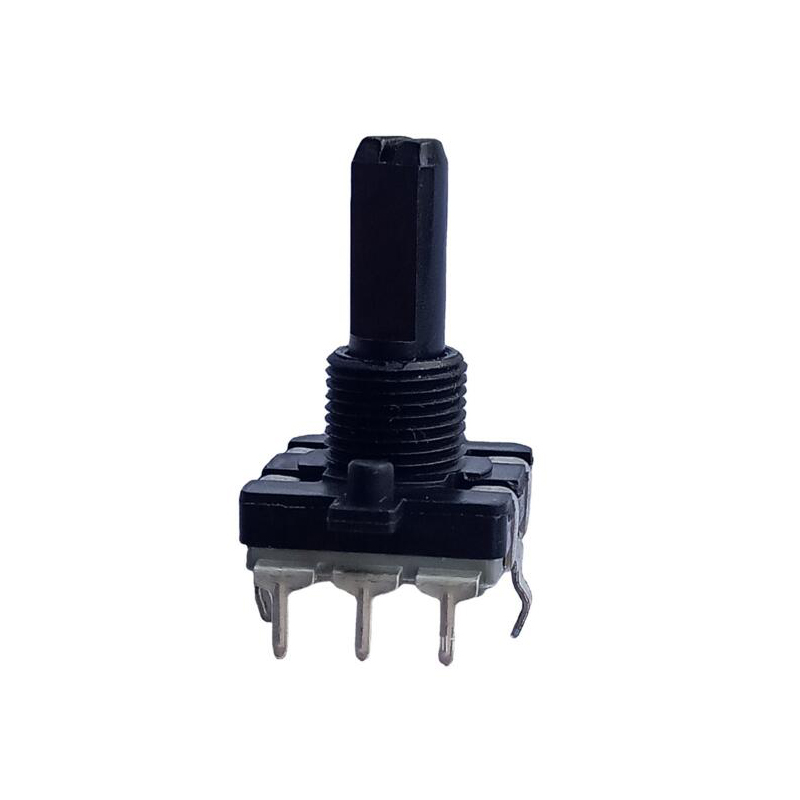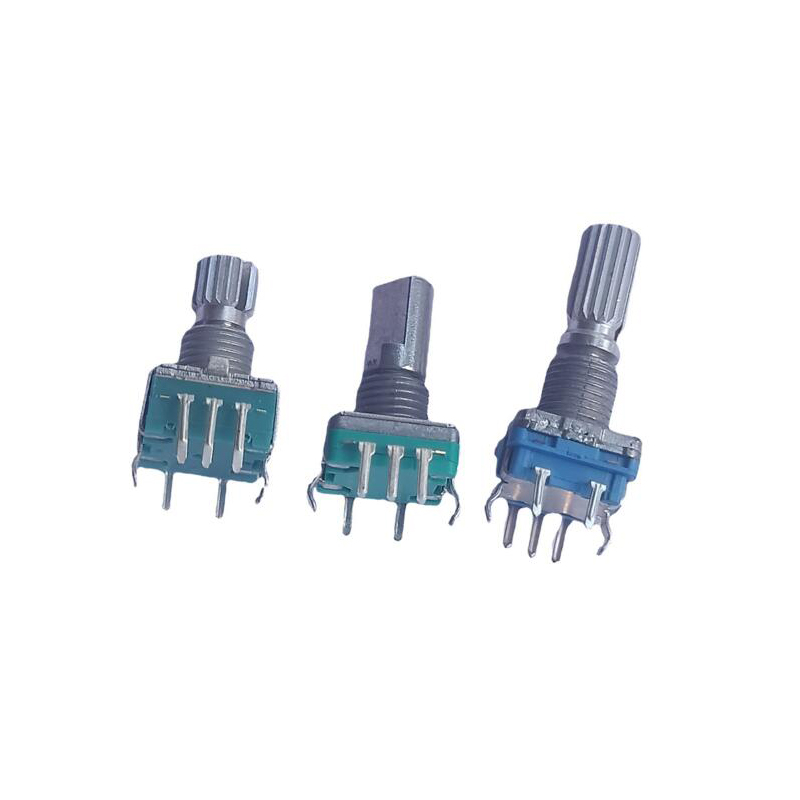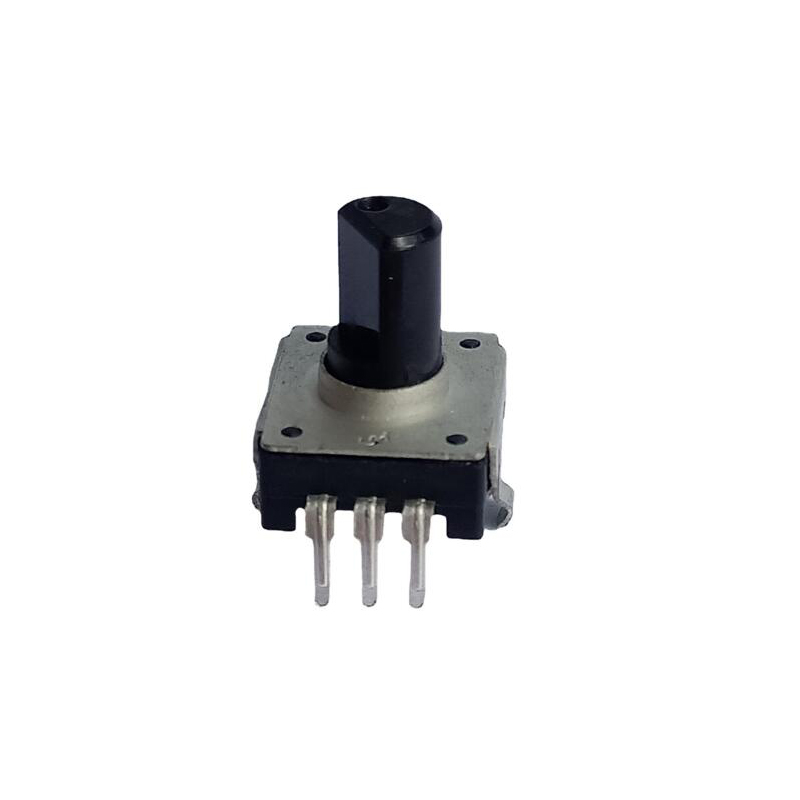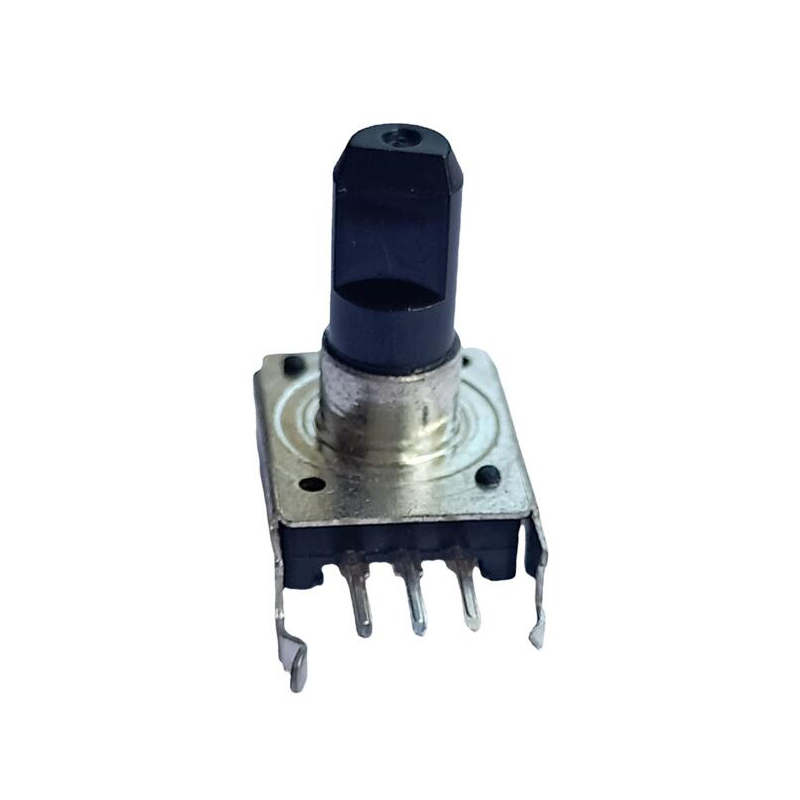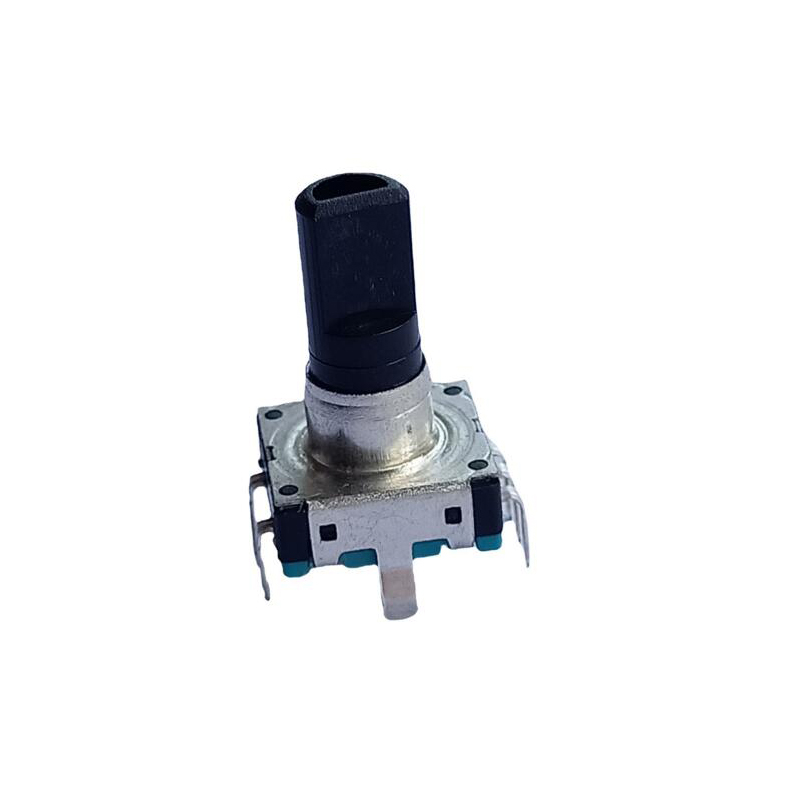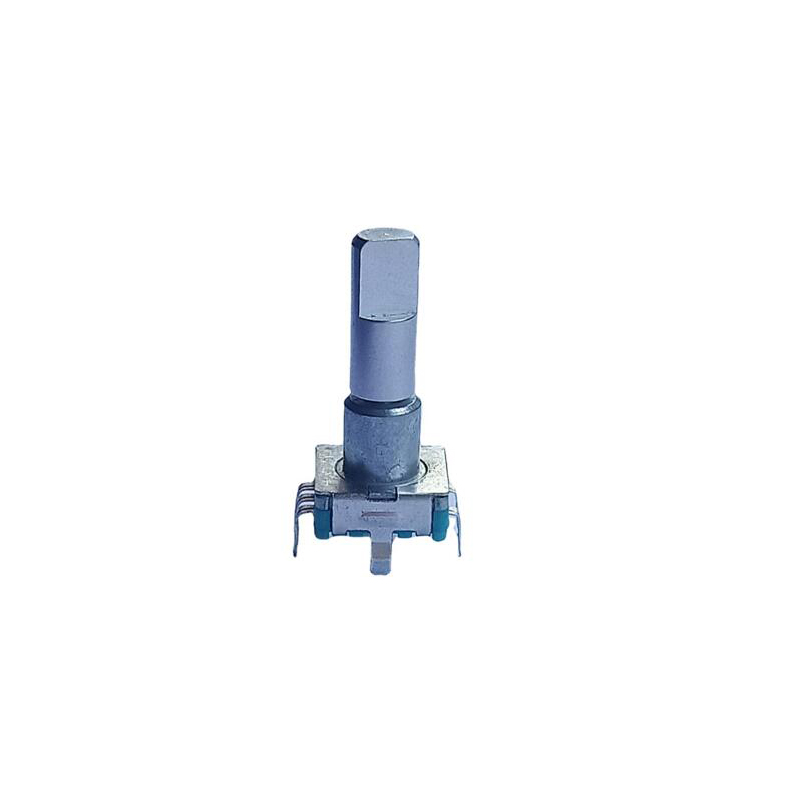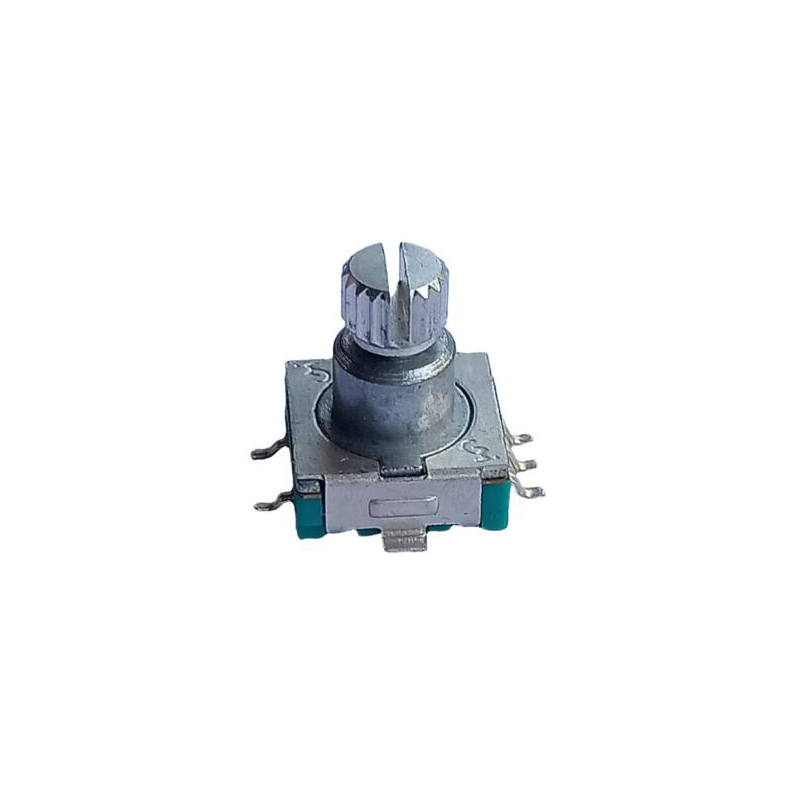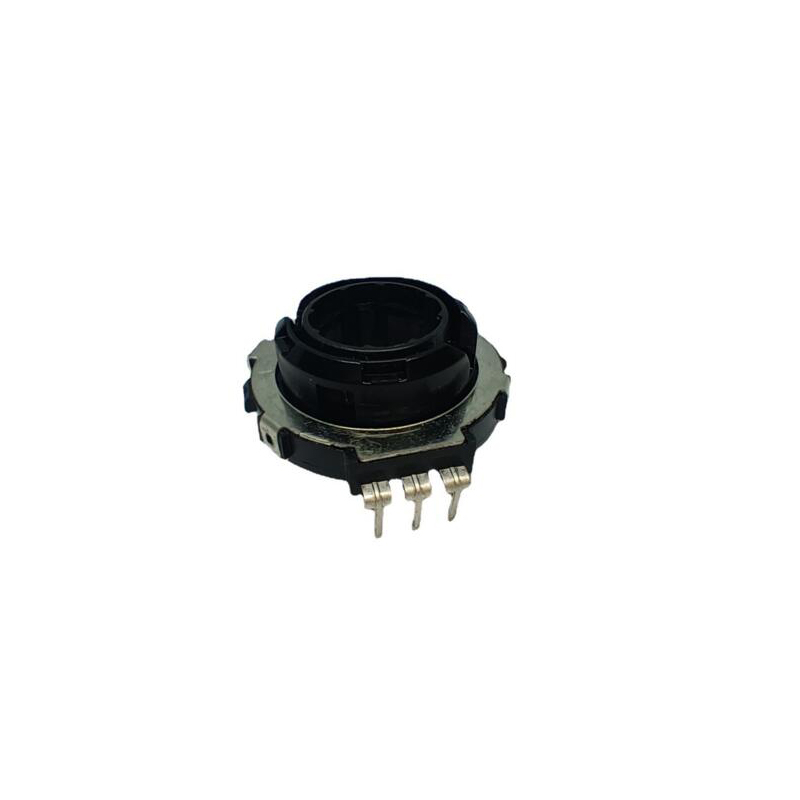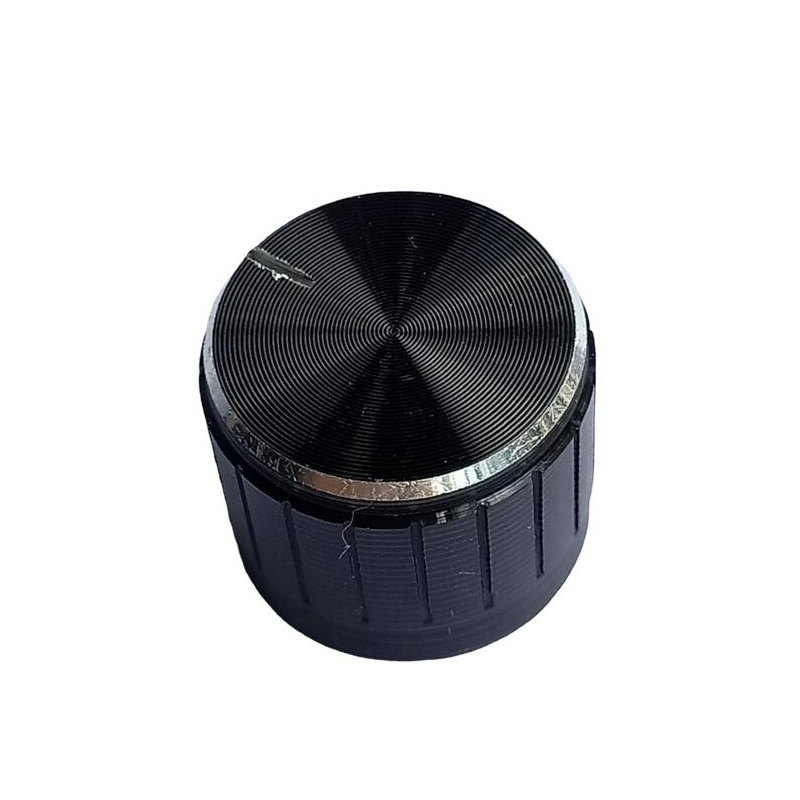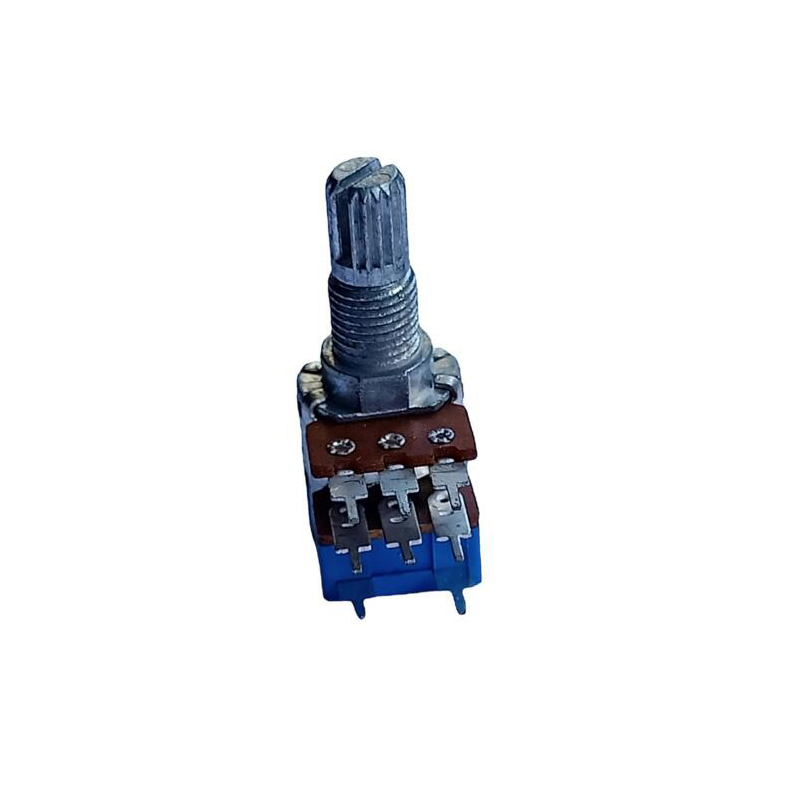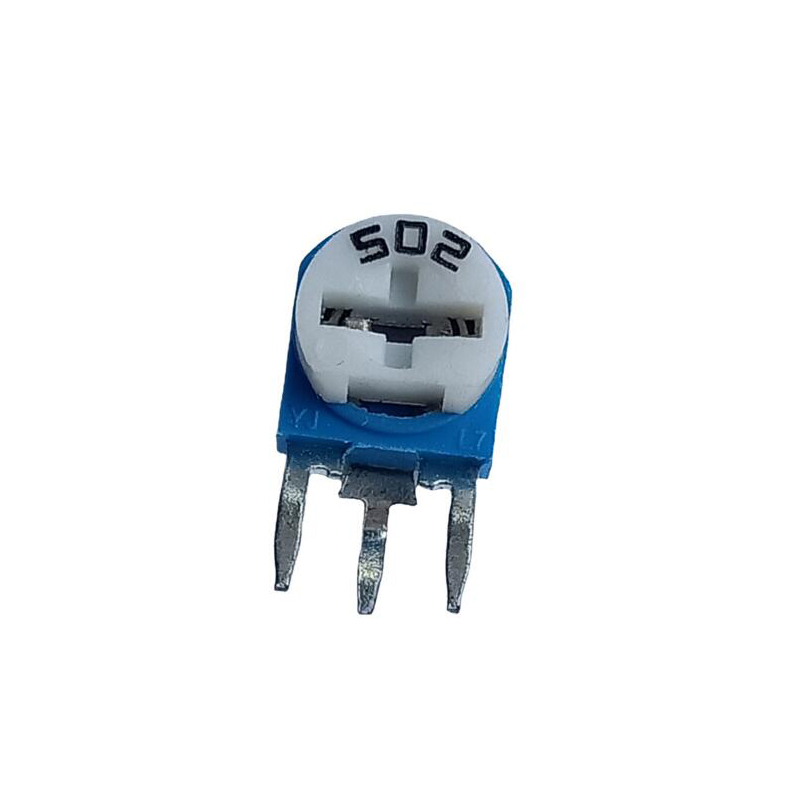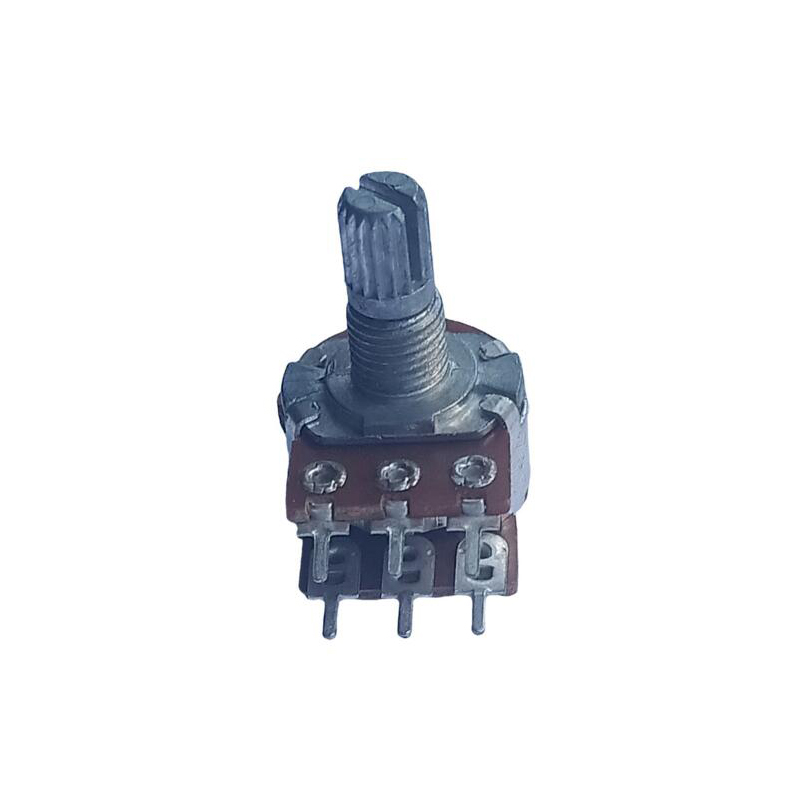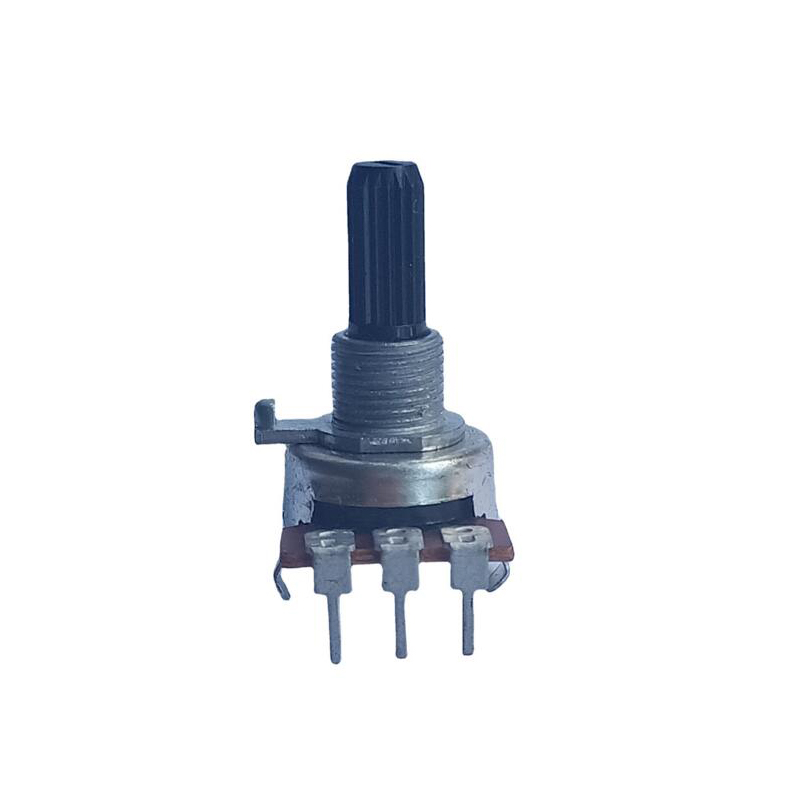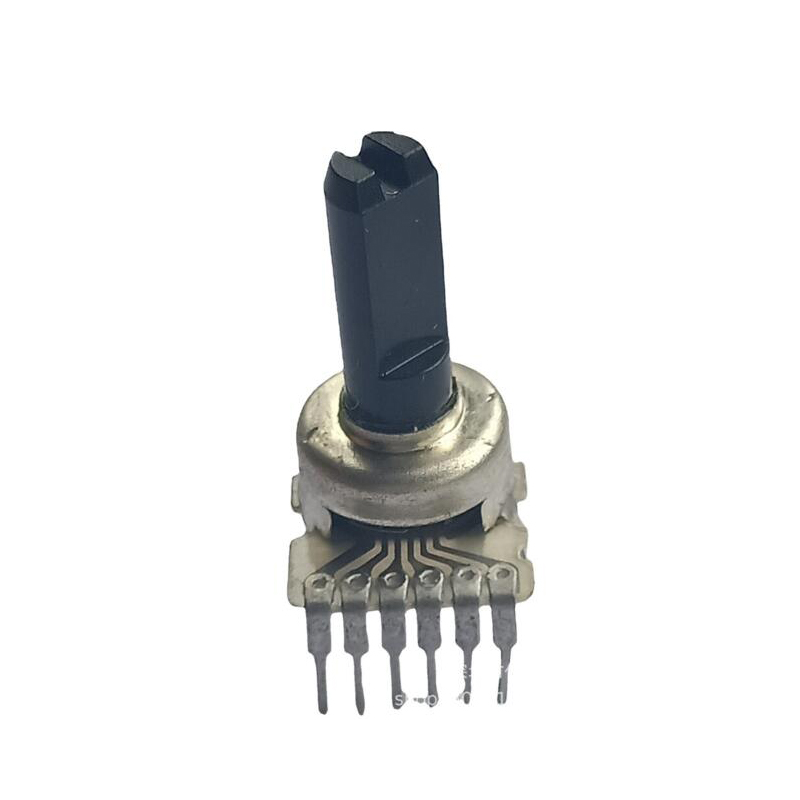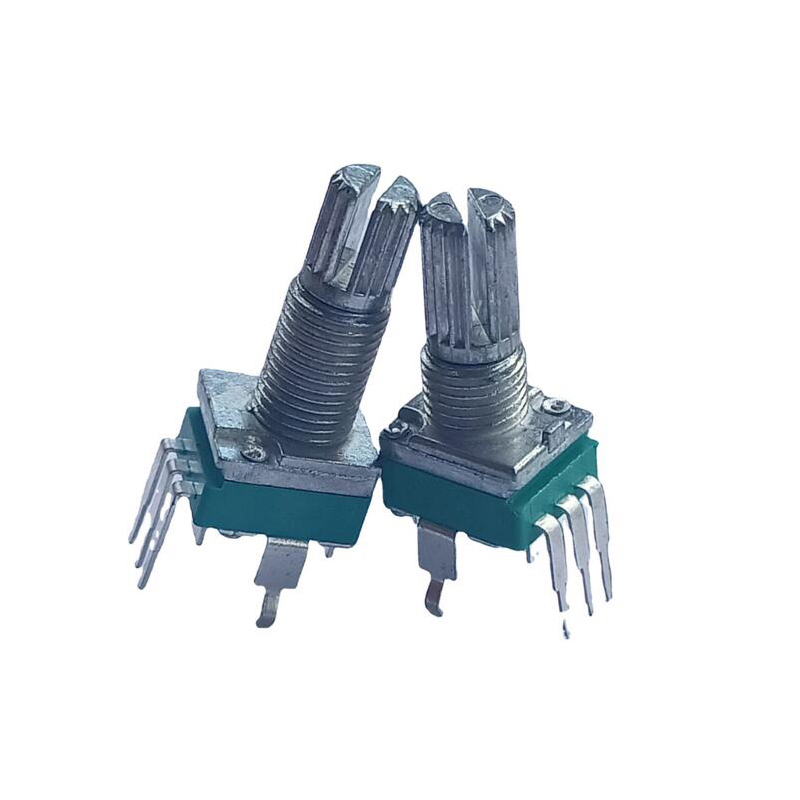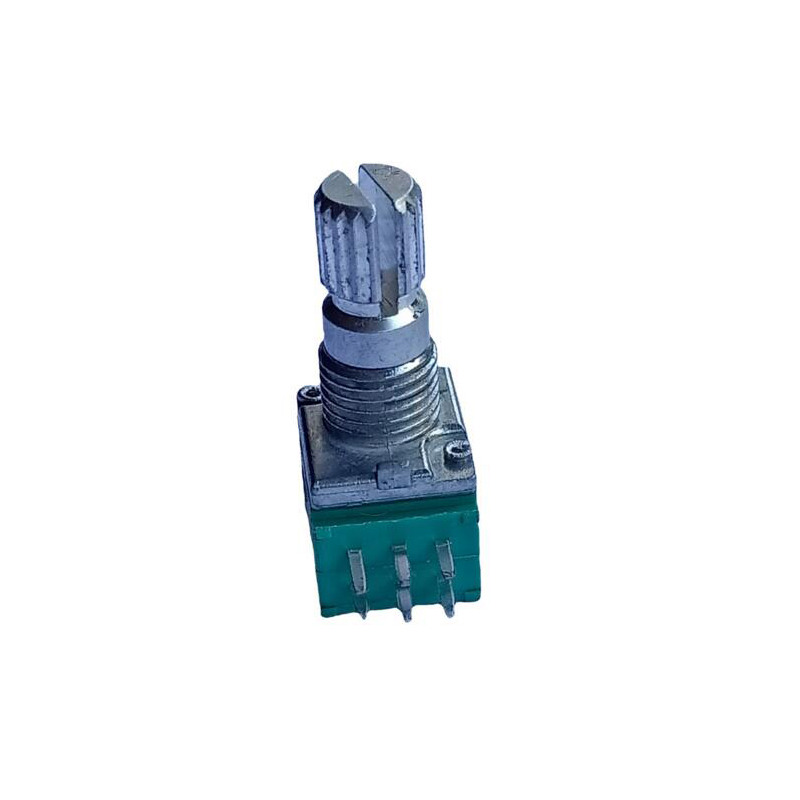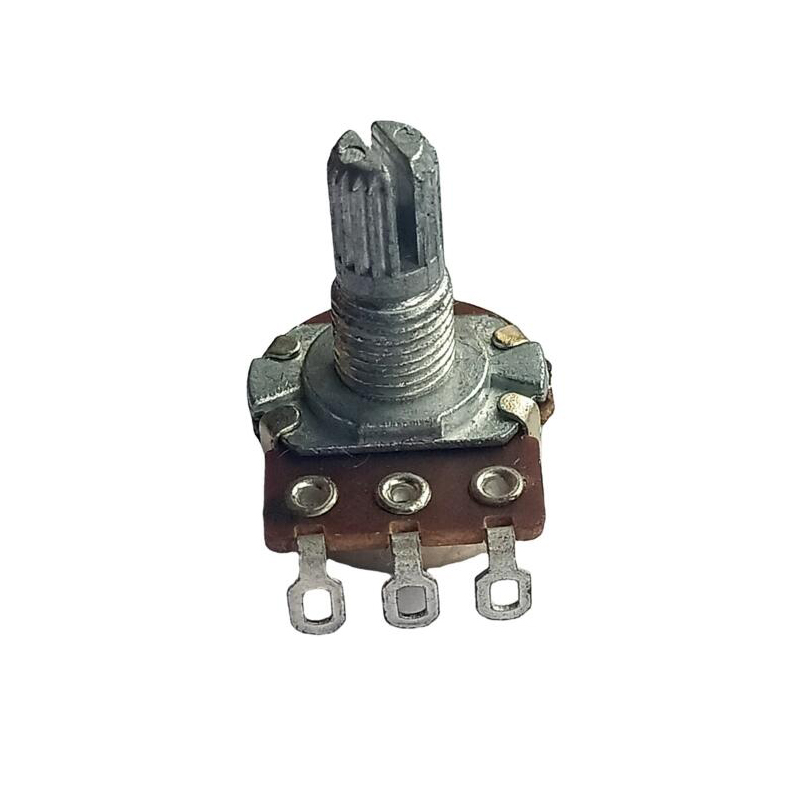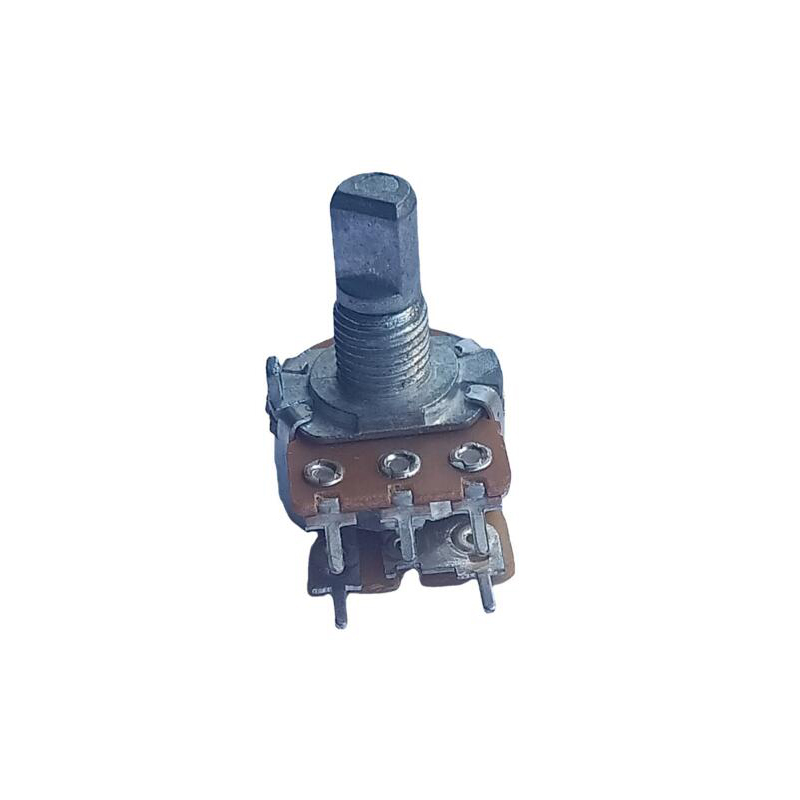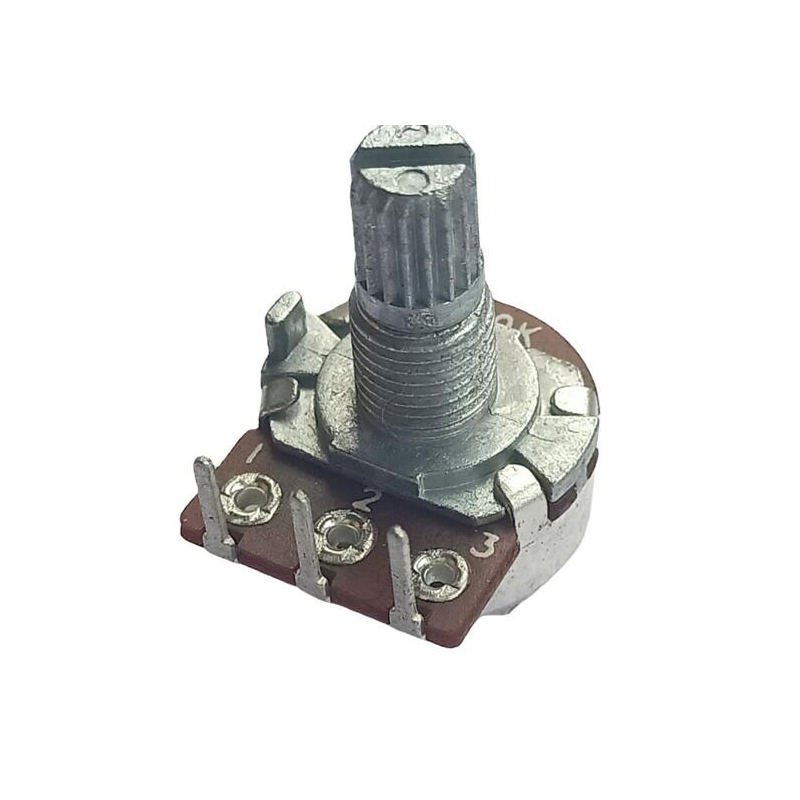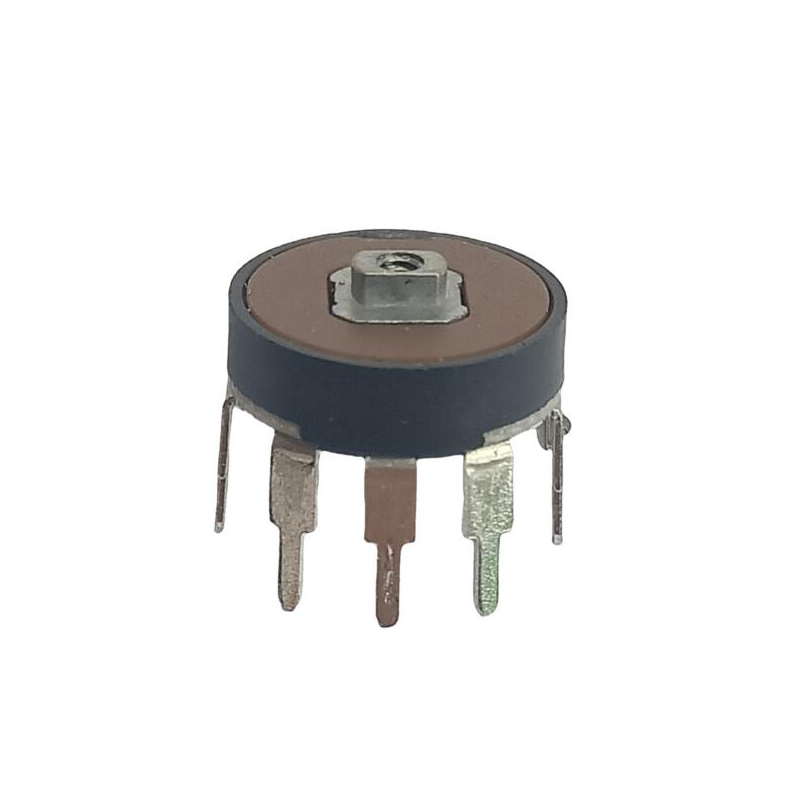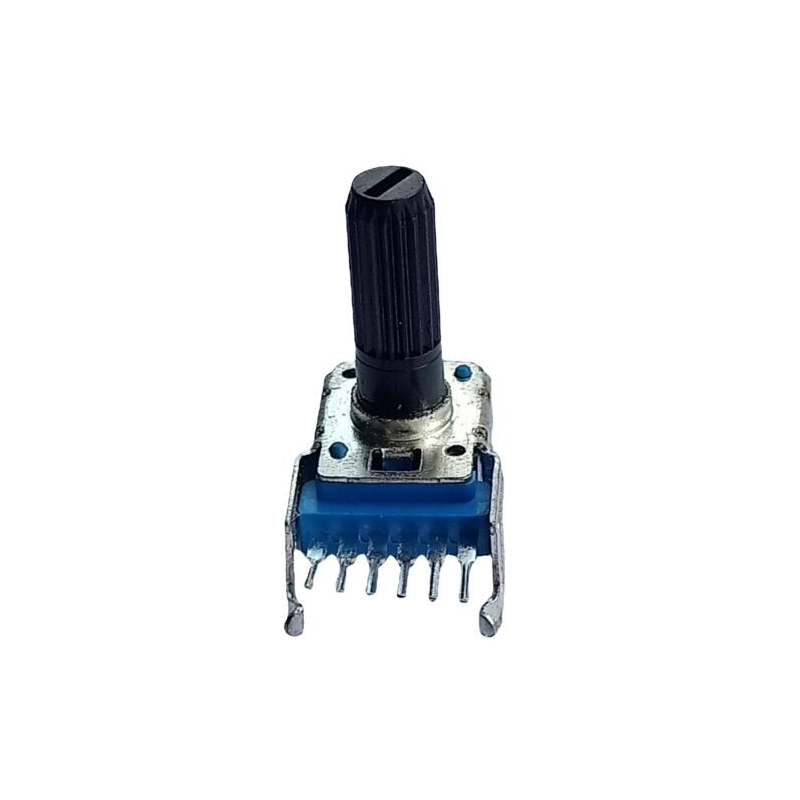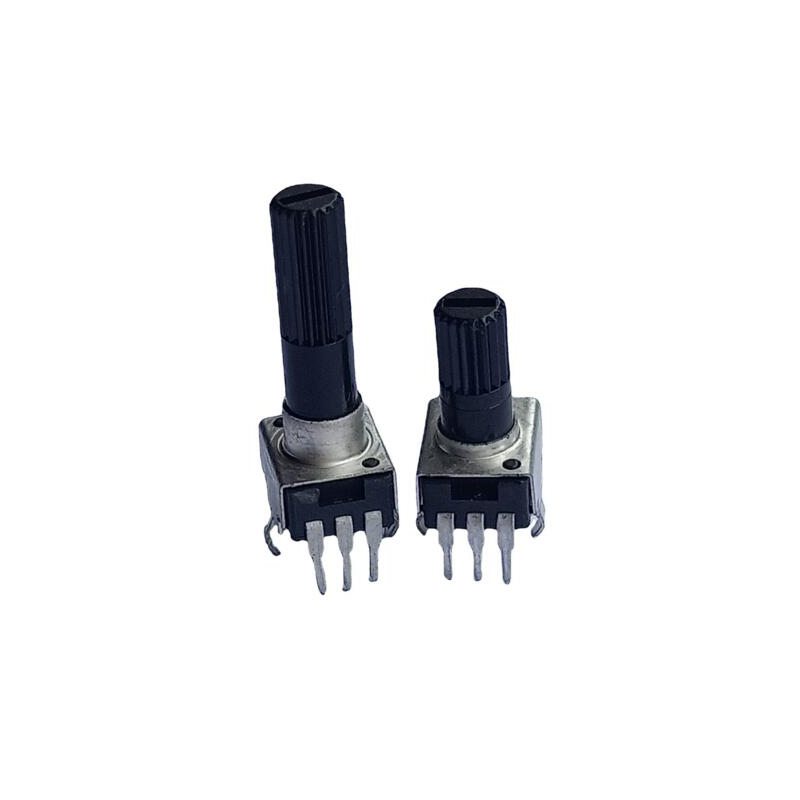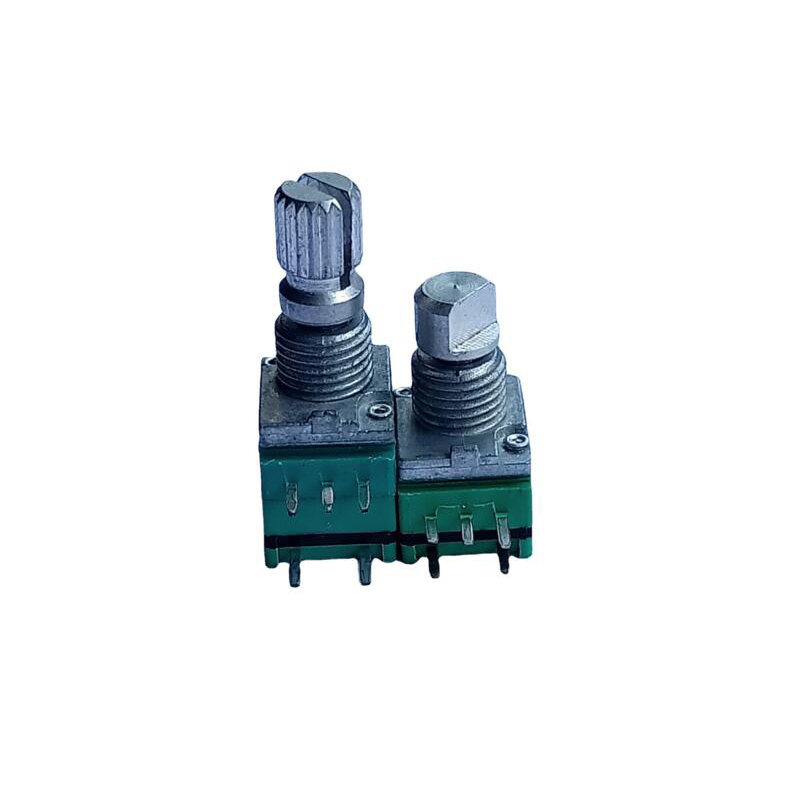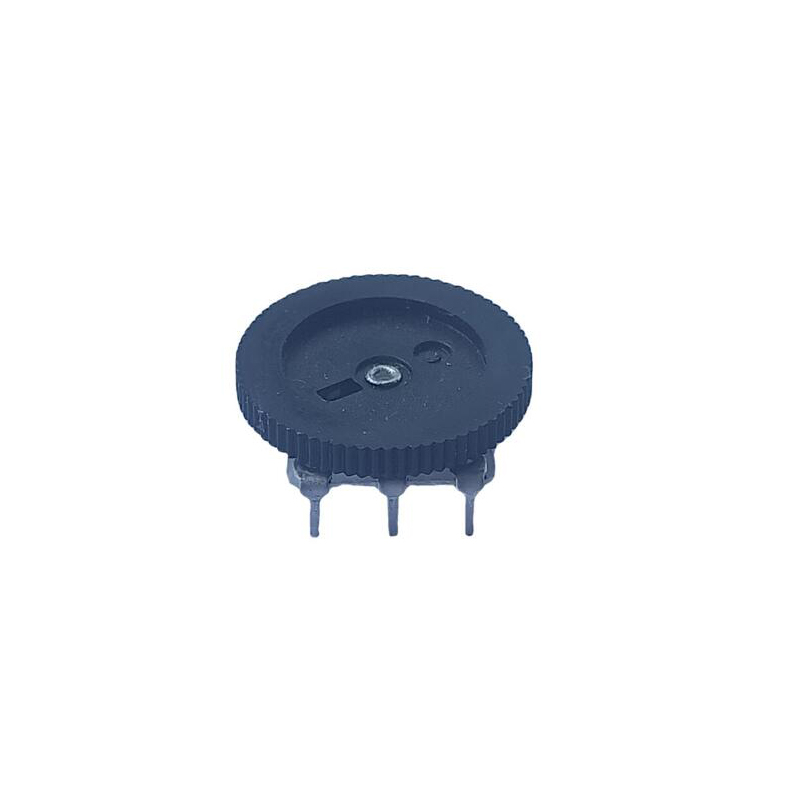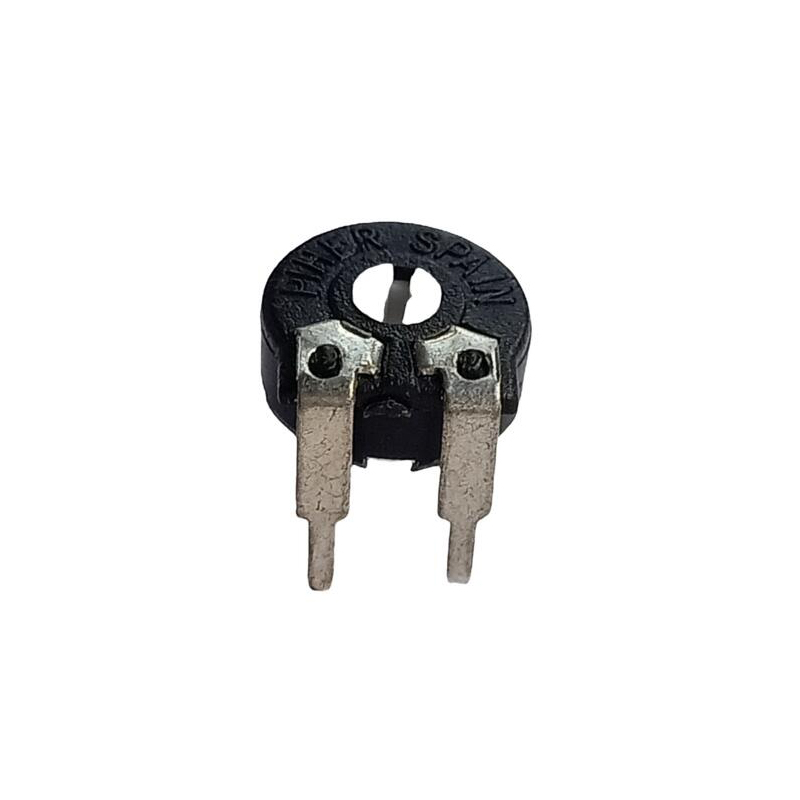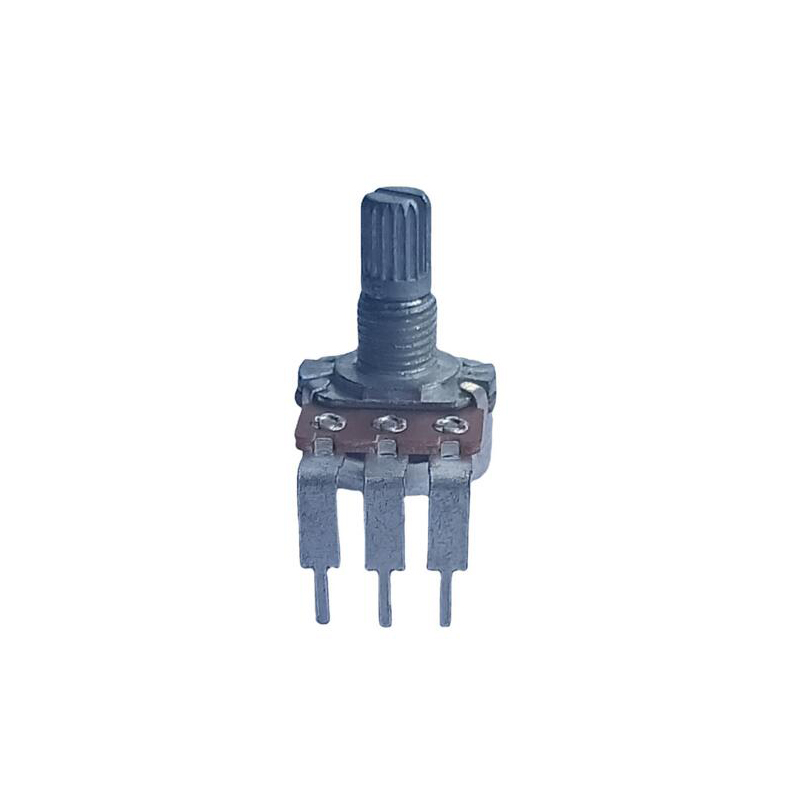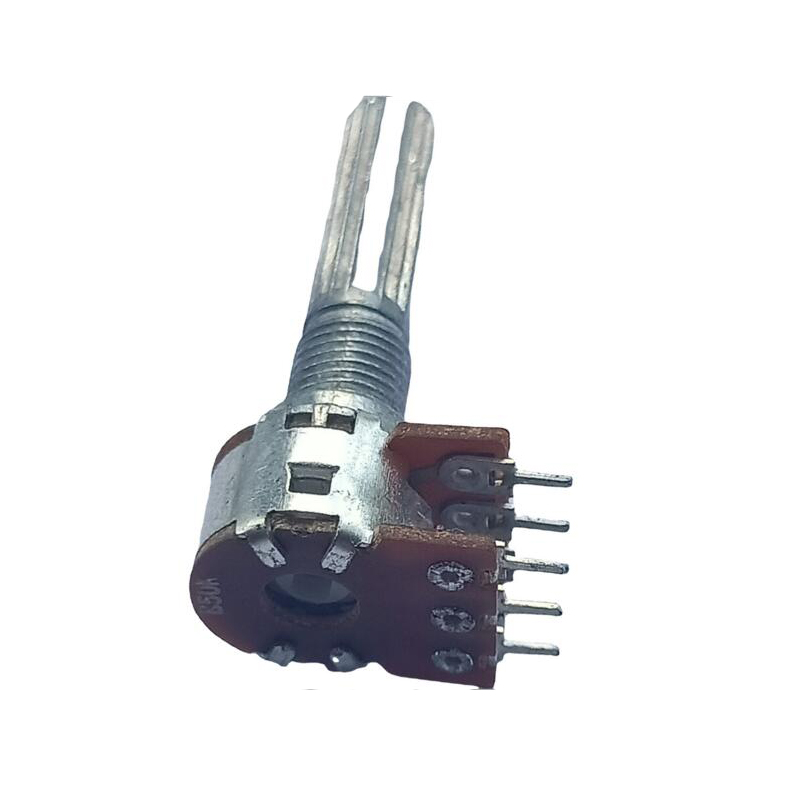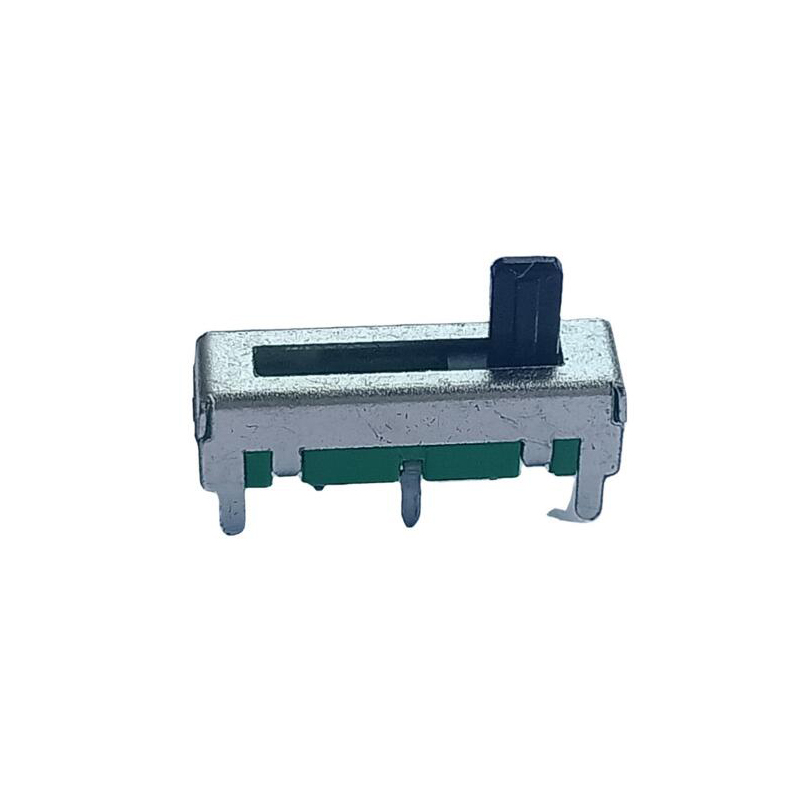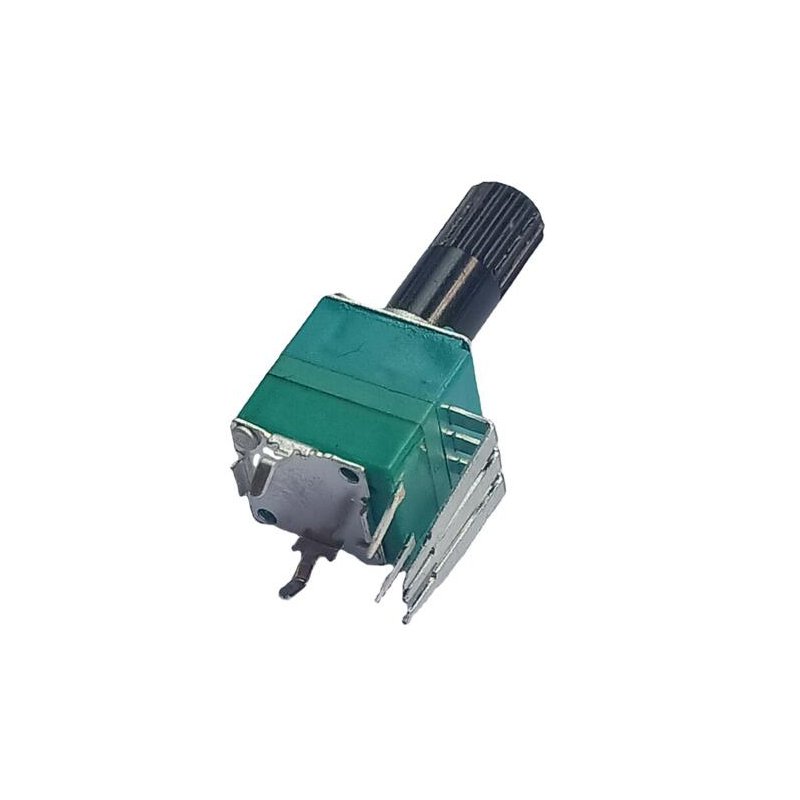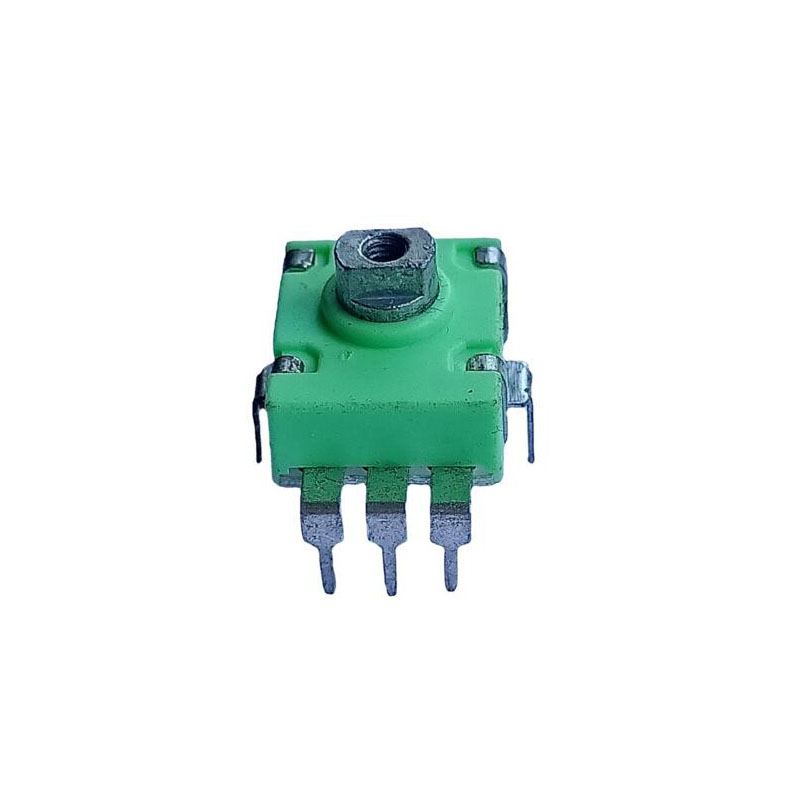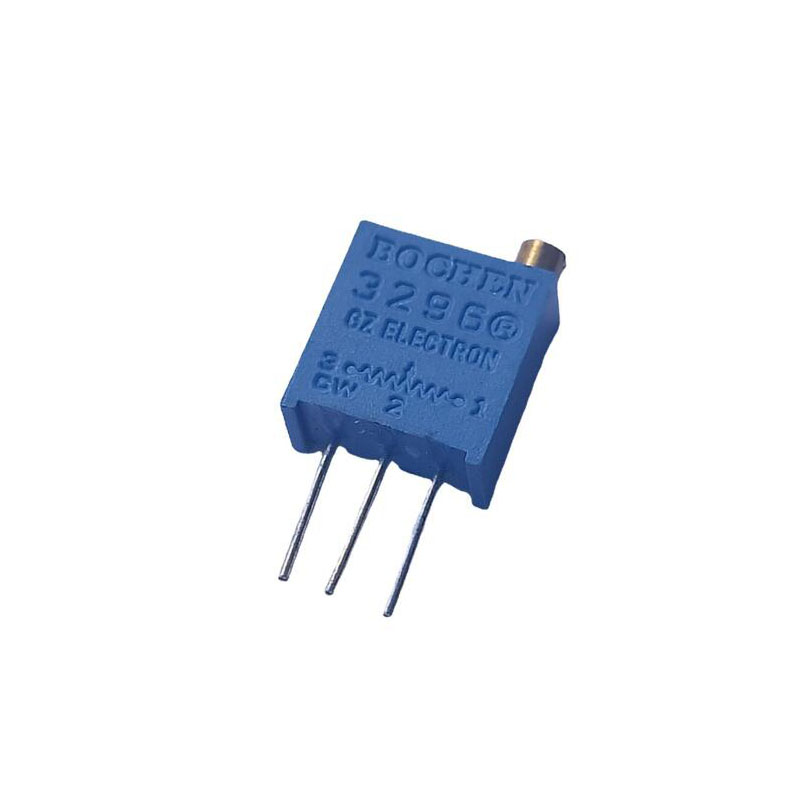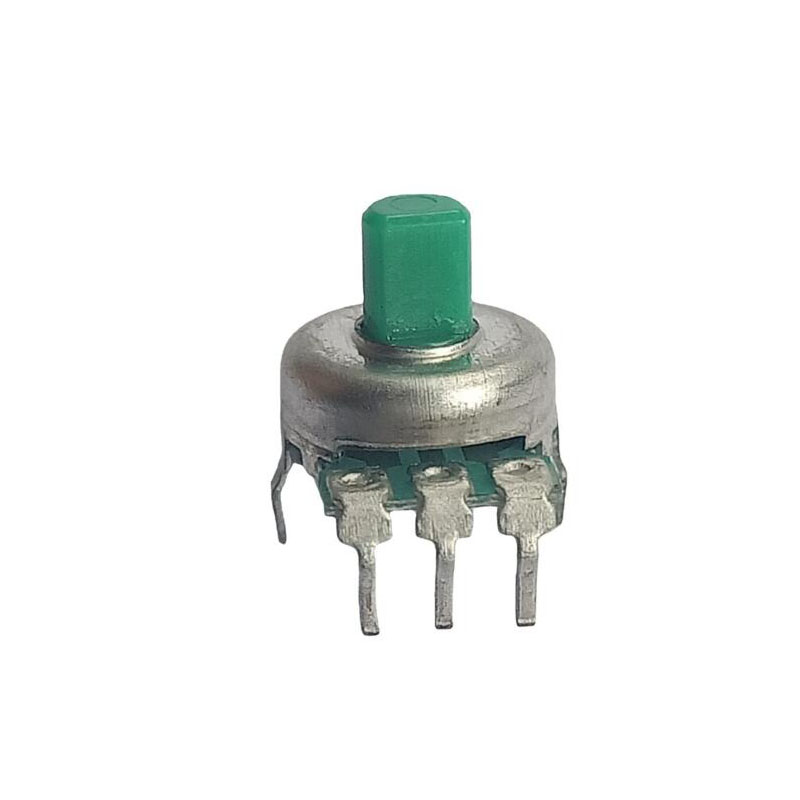What is a potentiometer?
Potentiometer is a resistance element with three leads and the resistance value can be adjusted according to a certain change law. Potentiometers usually consist of a resistor and a movable brush. When the brush moves along the resistance body, the resistance value or voltage related to the displacement is obtained at the output end.SoftPot Membrane Potentiometer,Guitar Potentiometers
The potentiometer can be used as either a three terminal element or a two terminal element. The latter can be regarded as a variable resistor. Because its function in the circuit is to obtain the output voltage which is related to the input voltage (applied voltage), it is called potentiometer.
Potentiometer sliding noise:
Sliding noise is a special noise of potentiometer. When changing the resistance value, due to improper resistance distribution of the potentiometer, improper coordination of the rotating system and contact resistance of the potentiometer, when the moving contact moves on the surface of the resistor body, the output end is accompanied by noise fluctuating with the signal in addition to useful signals.
For wire wound potentiometers, in addition to the above contact noise between moving contact and winding, there are resolution noise and short circuit noise. The resolution noise is caused by the ladder of resistance change, while the short-circuit noise is generated when the moving contact moves on the winding and shortens the adjacent wire turns. It is directly proportional to the current flowing through the winding, the resistance of wire turns and the contact resistance between the moving contact and the winding.
Mechanical life of potentiometer:
The mechanical life of potentiometer is also called wear life, which is often expressed by mechanical durability. Mechanical durability refers to the total number of reliable movements of the moving contact of the potentiometer under the specified test conditions, which is commonly expressed by "week". The mechanical life is related to the type, structure, material and manufacturing process of potentiometer, and the difference is quite large.
In addition to the above characteristic parameters, the potentiometer also has parameters such as rated power, allowable deviation of resistance value, maximum working voltage, rated working voltage, insulation voltage, temperature parameters, noise electromotive force and high-frequency characteristics. The meaning of these parameters is the same as that of the corresponding characteristic parameters of the resistor.
Classification of potentiometers
The key components of potentiometer are resistor and brush. Potentiometers can be divided into several types according to their structural form and whether they have switches. Potentiometers can also be classified according to the materials of resistors, such as wire winding, synthetic carbon film, metal glass glaze, organic solid core and conductive plastic. The electrical properties mainly depend on the materials used. In addition, a potentiometer with a resistor made of metal foil, metal film and metal oxide film is also used, which has special purposes. Potentiometers are distinguished according to their use characteristics, including general purpose, high precision, high resolution, high resistance, high temperature, high frequency, high power and other potentiometers; According to the resistance adjustment mode, there are adjustable type, semi adjustable type and fine-tuning type. The latter two are also called semi fixed potentiometer. In order to overcome the adverse impact of the moving contact of the brush on the resistor on the performance and service life of the potentiometer, there are contactless non-contact potentiometers, such as photosensitive and magnetic potentiometers, for a small number of special applications.
Adjustable winding potentiometer
Wire wound potentiometer: it has the advantages of high precision, good stability, small temperature coefficient, reliable contact, high temperature resistance and strong power load capacity. The disadvantages are that the resistance range is not wide enough, the high-frequency performance is poor, the resolution is not high, and the wire wound potentiometer with high resistance is easy to break, the volume is large and the price is high. This potentiometer is widely used in electronic instruments and meters. The resistance body of the wire wound potentiometer is composed of a resistance wire wound on an insulator. There are many kinds of resistance wires. The material of the resistance wire is selected according to the structure of the potentiometer, the space containing the resistance wire, the resistance value and the temperature coefficient. The finer the resistance wire, the greater the resistance value and resolution in a given space. However, the resistance wire is too thin, which is easy to disconnect in the process of use, affecting the service life of the sensor.
Carbon film potentiometer
Synthetic carbon film potentiometer: it has the characteristics of wide resistance range, good resolution, simple process and low price, but it has large dynamic noise and poor moisture resistance. This kind of potentiometer should be used as a functional potentiometer, which is widely used in consumer electronic products. The production of carbon diaphragm can be automated by printing process.
Organic solid core potentiometer: wide resistance range, high resolution, good heat resistance, strong overload capacity, good wear resistance and high reliability, but poor moisture resistance and dynamic noise. This kind of potentiometer is generally made into a small semi fixed form for micro call in the circuit.
Metal glass glaze potentiometer not only has the advantages of organic solid core potentiometer, but also has small resistance temperature coefficient (similar to wire wound potentiometer), but it has large dynamic contact resistance and large equivalent noise resistance. Therefore, it is mostly used for semi fixed resistance adjustment. This kind of potentiometer has developed rapidly, and its ability to withstand temperature, humidity and load impact has been improved. It can work reliably under harsh environmental conditions.
Conductive plastic potentiometer: wide resistance range, high linear accuracy, strong resolution, and long wear life. Although its temperature coefficient and contact resistance are large, it can still be used in analog and servo systems in automatic control instruments.
Digital potentiometer: potentiometer made by integrated circuit technology; A series of resistors are integrated into a chip, and MOS tube is used to control the resistors in series
Connection between network and public end; The control accuracy is determined by the bit number of control, generally 8 bits, 10 bits, 12 bits, etc; It can be used in analog circuit for impedance matching, magnification control of amplification circuit, etc; Avoid the trouble of jitter adjustment operation; It provides a convenient way for automatic gain, voltage change and impedance matching of the equipment.
Multi turn precision adjustable potentiometer: in some industrial control and instrument circuits, high adjustable precision is usually required. In order to meet the needs of production. This kind of circuit adopts a multi turn adjustable potentiometer. This kind of potentiometer has a large stepping range! High precision.
Resistance material classification
Carbon film: use carbon film as resistance film.
Metal film: a special ceramic film made of ceramic and metal materials is used as the resistance film.
Wire wound: use metal wire wound as resistance. Compared with carbon film or porcelain metal film, it can withstand higher power.
Structural classification
Rotary: a common form. The usual rotation angle is about 270 ~ 300 degrees.
Single loop: a common form.
Multi turn type: used for occasions requiring precise adjustment.
Linear sliding type: it is usually used in mixer to immediately see the position of volume and control fade in and fade out.
Quantity classification
Single connection type: one rotating shaft only controls a single potentiometer.
Duplex: two potentiometers are controlled by the same rotating shaft. They are mainly used in two channels and can control two channels at the same time.
Classification of resistance variation scale
Linear scale type: the change of resistance value has a linear relationship with rotation angle or moving distance. This kind of potentiometer is called B-type potentiometer.
Logarithmic scale type: the change of resistance value has a logarithmic relationship with rotation angle or moving distance. This potentiometer is mainly used for volume control. The commonly used type a potentiometer is suitable for occasions with high volume in clockwise direction and low volume in counterclockwise direction; In addition, there are C-type potentiometers with opposite change direction of logarithmic scale.
Classification by material of resistor
Potentiometers can be divided into wire wound potentiometers and non wire wound potentiometers according to the material of the resistor. Wire wound potentiometers can be divided into general wire wound potentiometers, precision wire wound potentiometers, high-power wire wound potentiometers and preset wire wound potentiometers. Non wirewound potentiometers can be divided into solid potentiometers and membrane potentiometers. Solid potentiometers are divided into organic synthetic solid potentiometers, inorganic synthetic solid potentiometers and conductive plastic potentiometers. Membrane potentiometers are divided into carbon membrane potentiometers and metal membrane potentiometers.
Classification by adjustment method
Potentiometers can be divided into rotary potentiometers, push-pull potentiometers, direct sliding potentiometers, etc
Classification according to the change law of resistance value
Potentiometers can be divided into linear potentiometers, exponential potentiometers and logarithmic potentiometers according to the change law of resistance value
Classification according to structural characteristics
According to its structural characteristics, potentiometers can be divided into single turn potentiometers, multi turn potentiometers, single link potentiometers, double link potentiometers, multi link potentiometers, tap type potentiometers, potentiometers with switches, lock type potentiometers, non lock type potentiometers and patch type potentiometers.
Classification by driving mode
Potentiometers can be divided into manual adjustment potentiometers and electric adjustment potentiometers according to the driving mode.
Other special types
Potentiometer with switch: it is usually used to integrate the volume switch with the power switch, that is, rotate counterclockwise to the bottom to cut off the switch and turn off the power supply.
Function of potentiometer
The main functions of potentiometer in the circuit are as follows
1. Used as voltage divider
The potentiometer is a continuously adjustable resistor. When the rotating handle or sliding handle of the potentiometer is adjusted, the moving contact slides on the resistor body. At this time, the output voltage that is related to the applied voltage of the potentiometer and the angle or stroke of the movable arm can be obtained at the output end of the potentiometer.
2. Used as rheostat
When the potentiometer is used as a rheostat, it should be connected into devices at both ends, so that a smooth and continuously changing resistance value can be obtained within the stroke range of the potentiometer.
3. Used as current controller
When the potentiometer is used as a current controller, one of the selected current output terminals must be the sliding contact lead out terminal.
NINGBO FBELE ELECTRONICS CO.,LTD.
FBELE company was founded in 1997, is China's leading manufacturer of acoustic and other electronic components, we designs,manufactures, distributes high quality products in very competitive price, bestservice, timely delivery, small order acceptable, etc. Our products include piezo ceramic element, piezoelectric buzzer, magnetic buzzer,speakers, transducer, receiver, electret condenser microphone, magnetic contact. Piezoelectric alarm,ultrasonic sensor,PZT ceramics,etc.
- Following 0
- Followers 0
- Send Msg


